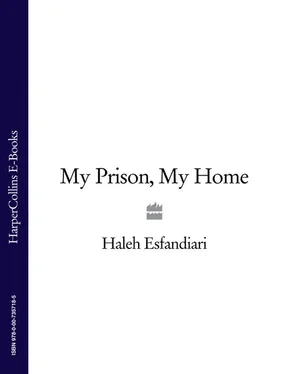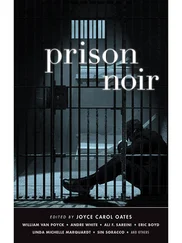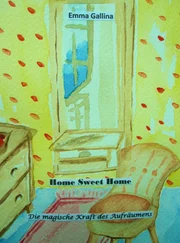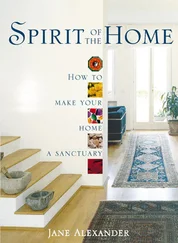Within six months, the publisher, Dr. Mesbahzadeh, decided I would be more useful as a reporter than as a translator. I began to cover visits to Iran by ministers, officials, and foreign heads of state. I also reported on trips abroad by the shah and other high officials. Shaul, who would become my husband a year later, worked for the English-language newspaper of the Kayhan publishing house.
We ran across each other in the newsroom but really “met” when both of us were covering the visit to Iran of Ethiopia’s emperor, Haile Selassie, who granted us an exclusive interview. At the end of the interview, after thanks and good-byes, I simply turned around and walked out, realizing only too late from the startled looks of Haile Selassie’s courtiers that I had committed a faux pas. You were not supposed to turn your back on the emperor. I met Haile Selassie once more in the late 1960s, when I covered the shah’s trip to Addis Ababa. The emperor recognized me. “I am indebted to you,” I said. “I met my future husband when interviewing you.”
“Well, and are you happy with your husband?” he asked with a twinkle in his eye.
I had taken to Shaul immediately. He was already a prominent journalist, covering all the major stories for his newspaper and writing for the Financial Times and the Economist. He had a sharp intellect, fierce integrity as a journalist, and was infectiously enthusiastic about newspaper work. Covering stories with him was always an adventure. We were both interested in Iranian politics; we both loved literature. When we first met, he was deeply into the German playwright Bertolt Brecht, and he soon presented me with several of Brecht’s plays in the original German, which would not have been easy to locate in Tehran’s bookstores. He had studied in America and opened up to me a whole new world of American history, literature, and politics.
The decision to marry was not an easy one. We came from two different communities, and marriages between Jews and Muslims were extremely rare, virtually unheard of, in our two societies. Both Shaul’s family and mine were deeply unhappy. We were breaking all sorts of taboos, and, looking back, I am amazed at our audacity. But we were young and determined, and once we were married, I was warmly accepted into Shaul’s family and Shaul into mine. Shaul and Mutti grew especially close to each other.
Two years into our marriage, in 1966, Shaul decided he would like to return to Harvard, where he had gone to college, to study for an MA in Middle Eastern studies. He was covering the Middle East and wanted to study the region more seriously. Besides, he was unhappy with the creeping censorship of the press. We spent two years in Cambridge, Massachusetts, basically exchanging our comfortable life as professional journalists for the more cramped circumstances of graduate students. Shaul’s scholarship hardly covered our expenses, especially once our daughter, Haleh, arrived.
Shaul received his MA in 1968, but student life continued for the next three years as Shaul pursued his PhD, in Iranian history, at Oxford University. I taught Persian while he completed his doctorate.
We returned to Iran and to our newspaper jobs in 1972. The Kayhan organization was enjoying a period of considerable success and expansion. Kayhan continued to be more “liberal” than Tehran’s other large-circulation daily, Ettela’at , but it was no longer the bold and risk-taking newspaper I had joined nearly a decade earlier. The weight of censorship had grown heavier, and the freedom to write and publish more restricted. Mesbahzadeh’s own liberal preferences remained in place, and as the publisher, he was always admirably protective of his editors and reporters. Pressured to fire journalists who had stepped on the censors’ toes, he continued to pay their salaries and brought them back to the newsroom at the first opportunity. He kept jobs open for colleagues who went to jail, took care of their families, and reemployed them once they were released. He allowed reporters who were banned by the shah’s secret police, SAVAK (the Persian acronym for Organization for State Security and Intelligence), to write for Kayhan under assumed names.
But the organization’s very success was a kind of vulnerability, since the financial stakes were now huge. The staff and employees numbered in the hundreds. “If we are closed down, who is going to pay all these people?” Mesbahzadeh once asked Shaul, who was insisting he stand up more aggressively to the censors. The government was a source of advertising revenue, and it set policies that could affect everything from Kayhan’s ability to purchase newsprint abroad to Mesbahzadeh’s considerable land holdings. Increasingly the shah and the government showed less tolerance for even the mildest criticism, and the grip on the media of the emboldened Information Ministry grew tighter. Dr. Mesbahzadeh continued to allow his editors considerable autonomy, but the editors were being hounded daily by the censors.
In 1973, rumors circulated at Kayhan that Mesbahzadeh was under pressure from Prime Minister Amir Abbas Hoveyda to name his protégé, Amir Taheri, a Kayhan reporter, as editor of the newspaper. Taheri, who seemed all too willing in his reporting to do the prime minister’s bidding, was to replace the highly respected, independent-minded Mehdi Semsar. The rumor proved true. One morning Taheri’s appointment was announced to the staff. When he walked into the newsroom a few minutes later and took his seat behind the editor’s desk, one colleague and I gathered up our belongings and walked out of the newsroom and the building. We quit. I subsequently had a long meeting with Mesbahzadeh, who tried to convince me not to leave. Editors come and go, he said, but Kayhan will endure. I was not persuaded; and I have never regretted my decision. Leaving Kayhan was difficult for me. It was the country’s leading newspaper; I took pleasure in the work and in being part of the Kayhan family. Shaul and I needed both our salaries to make ends meet. But I am proud of having refused to work under a government-imposed editor who represented everything I disdained in a profession I loved.
I had grown interested in women’s issues during my last years at Kayhan. When my friend Mahnaz Afkhami, the secretary general of the Women’s Organization of Iran (WOI), invited me to join her team, I welcomed the opportunity to work with her.
The WOI, established in 1966, was the umbrella organization for almost all women’s groups and women’s activity in Iran. Mahnaz, a dynamic American-educated feminist, had taken over a dormant organization in 1970 and turned it into an effective instrument to promote women’s causes.
The struggle for women’s rights in Iran began in the late nineteenth century. Women took an active part in the Constitutional Revolution of 1906, but the constitution that was wrested from Mozaffar al-Din Shah of the former Qajar dynasty did not give women the right to vote. A handful of women campaigned for women’s education, and established the first schools for girls in the early years of the twentieth century. Under Reza Shah, the government established a system of public elementary and secondary schools for girls as well as boys. When Tehran University, the country’s first modern university, was established in 1936, it admitted both men and women. Reza Shah had already ordered the abolition of the veil. He saw it as a symbol of Iran’s backwardness and a barrier to the education of women and their introduction into the workforce and society. The marriage age for girls was raised from nine to thirteen—a radical step at the time. Women entered the workforce, initially in the civil service.
Читать дальше












